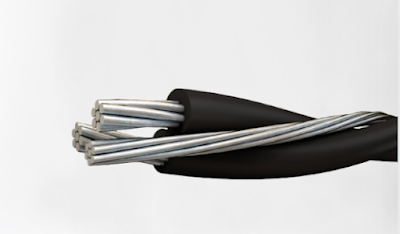How are Capillary Tubes Made?
 |
| Capillary Tubes |
Introduction:Capillary tube, slender conduits with a myriad of applications across various industries, embody a remarkable fusion of precision engineering and material science. These seemingly modest tubes play pivotal roles in diverse fields, from refrigeration and medical diagnostics to aerospace engineering and chromatography. Yet, despite their ubiquity, the manufacturing process behind capillary tube remains an enigma to many. In this comprehensive guide, we delve into the intricacies of capillary tube production, unraveling the meticulous steps involved in crafting these indispensable components.
Understanding Capillary Tubes:
Before delving into the manufacturing process, it's crucial to grasp the significance of capillary tube. These slender tubes, typically made from materials like glass or metal, boast extremely small diameters, often ranging from fractions of a millimeter to a few millimeters. This diminutive size is integral to their functionality, enabling precise fluid control and heat transfer in a wide array of applications.Manufacturing Techniques:
1. Material Selection:
The journey of crafting capillary tube commences with the careful selection of raw materials. Depending on the intended application and desired properties, manufacturers opt for materials such as borosilicate glass, stainless steel, copper, or aluminum. Each material offers distinct advantages in terms of thermal conductivity, chemical resistance, and mechanical strength, aligning with specific industry requirements.
2. Tube Formation:
Capillary tube are typically fabricated through one of two primary techniques: extrusion or drawing.
- Extrusion: In this method, molten material is forced through a die to form a continuous profile with the desired cross-sectional shape. Subsequent cooling and cutting processes yield capillary tubes of precise dimensions. Extrusion is favored for materials like plastics and certain metals.
- Drawing: Alternatively, drawing involves pulling a solid rod or preform through a series of dies, gradually reducing its diameter to the desired dimensions. This process imparts superior dimensional accuracy and surface finish, making it well-suited for materials like glass and metals with high melting points.
3. Dimensional Control:
Maintaining stringent dimensional tolerances is paramount in capillary tube manufacturing to ensure consistent performance across applications. Advanced machining techniques, including laser cutting and precision grinding, are employed to achieve the requisite diameter, wall thickness, and length specifications with exceptional accuracy.
4. Surface Treatment:
Surface quality plays a pivotal role in the functionality and longevity of capillary tubes. Depending on the material and application, tubes may undergo surface treatments such as polishing, etching, or coating to enhance corrosion resistance, reduce friction, or facilitate fluid flow.
Applications and End-Uses:
The versatility of capillary tube renders them indispensable in a multitude of applications, spanning diverse industries:1. Refrigeration and HVAC Systems:
Capillary tubes serve as expansion devices in refrigeration and air conditioning systems, precisely metering the flow of refrigerant to regulate temperature and pressure within evaporators and condensers.
2. Medical Diagnostics:
In medical laboratories and diagnostic equipment, capillary tube find utility in tasks ranging from blood sampling and microfluidic assays to gas chromatography, facilitating precise fluid handling and analysis.
3. Aerospace and Automotive Engineering:
Aerospace and automotive industries leverage capillary tubes for tasks such as fuel injection, hydraulic systems, and temperature sensors, harnessing their compact dimensions and robust performance in demanding environments.
4. Scientific Research:
Capillary tubes play a pivotal role in various scientific disciplines, including chemistry, biology, and materials science, enabling precise fluid manipulation, chromatographic separations, and microscale experiments.
Challenges and Innovations:
Despite their ubiquity, capillary tube manufacturing is not devoid of challenges. The quest for ever-finer dimensions, enhanced material properties, and cost-effective production methods continues to drive innovation in the field.1. Miniaturization:
As technological advancements demand increasingly miniature components, manufacturers face the challenge of producing capillary tubes with sub-micron dimensions while maintaining structural integrity and performance.
2. Material Innovation:
The development of novel materials with tailored properties, such as enhanced thermal conductivity or biocompatibility, expands the horizons of capillary tube applications while posing challenges in terms of processing and characterization.
3. Additive Manufacturing:
Emerging additive manufacturing techniques, such as 3D printing, offer tantalizing prospects for rapid prototyping and customized production of complex capillary geometries, albeit with inherent limitations in terms of resolution and material selection.



Comments
Post a Comment